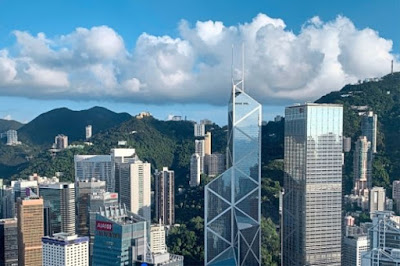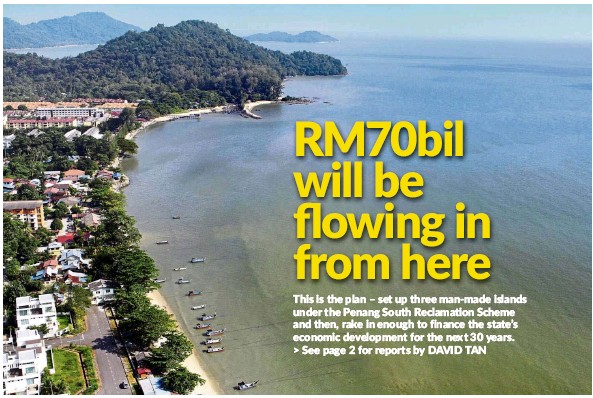https://youtu.be/tOw6kfhS1Ns - Annie Wu: Young HK people need to learn to become Chinese
There’s no such thing as a free lunch, and likewise, in the pursuit of democracy, there will always be casualties.
ONE of the most avid speculations about the Hong Kong protests is whether the CIA is involved, and this talk is fuelled, no less, by warnings from the Chinese to the US to keep out of Hong Kong’s affairs.
Last week, former HK chief executive Tung Chee-hwa was more ominous, openly accusing the US and Taiwan of orchestrating “well-organised” recent protests.
The first retaliatory strike from China on Taiwan was the ban on solo travellers, involving 47 mainland cities to Taiwan, which will cost the island state US$900mil (RM3.75bil) in tourism dollars by January.
Let’s look at these accusations rationally, though. It’s impossible for the CIA to hire such a massive crowd in Hong Kong.
The anger is real, though, and the spontaneity of the protests speaks for itself.
There has been growing frustration among the people, especially the younger generation, over what they see as the decline in living standards, and many now don’t see a future in the city.
The amendment to the Extradition Law has touched a nerve among HK citizens because many perceive they would not get justice or due legal rights under China’s mainland rule.
Let’s put it this way, the judicial independence in China isn’t ranked highly by international standards, and even Chinese nationals complain about it.
HK citizens are concerned that their city will be like any other mainland Chinese city, where the citizens’ freedom could be compromised, although one wonders how many of these protesters truly believe they would ever get extradited to China in the first place.
The Bill is, essentially, a manifestation of the frustrations that have built up, and its timing allowed for that volcanic eruption of anger.
It’s unlikely the young protesters were aware that HK has, in fact, extradition agreements with 20 countries, including Britain and the United States. From China’s point of view, why can’t there be one with the mainland?
Against this backdrop, with students on summer holidays, the perfect concoction was created, building up a massive protest for an international audience.
The timing couldn’t have been worse for HK chief executive Carrie Lam to push the Bill through – this is the season of protests, coinciding with the anniversaries of the Tiananmen Square incident and British handover of HK to China on July 1, 1997.
By now, it’s clear that Lam is a technocrat who isn’t politically savvy, and her lack of learned leadership during a crisis shows her shortcomings in being the best person to helm HK, even though China continues to back her.
The Bill has been suspended since June 15 until further notice, but not withdrawn. She has said the legislation process was a complete failure and that “the Bill is dead”, but she hasn’t enacted any legislative process to withdraw the proposal either.
So protests will likely continue, but nothing is free, and that includes the business of organising well-planned weekly protests.
Over the past month, the media has been reporting that groups involved in the protests have received significant funding from the National Endowment for Democracy (NED), “a CIA soft-power cut-out that has played a critical role in innumerable US regime-change operations, ” according to writer Alexander Rubinstein.
The report claimed that the NED has four main branches, at least two of which are active in Hong Kong: the Solidarity Center (SC) and National Democratic Institute (NDI).
“The latter has been active in Hong Kong since 1997, and NED funding for Hong Kong-based groups has been consistent, ” Louisa Greve, vice president of programmes for Asia, Middle East and North Africa, was quoted.
While NED funding for groups in Hong Kong goes back to 1994, 1997 was when the British returned the territory to China, it was reported.
The report said in 2018, NED granted US$155, 000 (RM645, 885) to SC and US$200, 000 (RM833, 400) to NDI for work in Hong Kong, and US$90, 000 (RM375, 000) to Hong Kong Human Rights Monitor (HKHRM), which isn’t a branch of NED, but a partner in Hong Kong. Between 1995 and 2013, HKHRM received more than US$1.9mil (RM7.9mil) in funds from the NED.
This isn’t the first time the NED’s name has cropped up either.
During the 2014 Occupy protests, the spectre of NED in the protests and the foreign philosophies it represented also came up.
The NED was set up in 1983 to channel grants for “promoting democracy” and it’s said that it receives US$100mil (RM416mil) annually from the relevant agencies.
Hong Kong media tycoon Jimmy Lai has also been accused of funding the protests. He has taken it a step further by meeting US Vice President Mike Pence and Secretary of State Mike Pompeo in Washington DC to discuss the Bill and the city’s situation.
Lai is the owner of Next Digital, which publishes both the pro-democracy Apple Daily and Next Magazine, among others.
Predictably, the Chinese Foreign Ministry in Hong Kong issued a statement saying it has lodged a solemn representation at the US Consulate General in Hong Kong to ask the US to stop its “mistaken words and deeds”.
A spokesperson for the local Commissioner’s Office said that it strongly opposed foreign forces interfering in Hong Kong’s affairs.
“The US side clearly knows who Jimmy Lai is, what his stance is, and what his role is in Hong Kong society. Top US government officials have ulterior motives and sent a seriously wrong signal when they queued up to meet such a person at this sensitive time of Hong Kong – we express our strong discontent and opposition, ” it said.
In 2014, the South China Morning Post reported that Lai spent millions funding the Occupy Central protests.
The SCMP reported that Lai’s group offered extensive advice – including propaganda material – to the Occupy Central organisers, whom Lai dismissed in private as “idealist scholars” who “couldn’t make the cut without help”.
The emails were leaked by the same person who sent documents detailing the Next Media chairman’s political donations to various pan-democrats two weeks ago. It isn’t clear how the documents were obtained, though.
One of the exchanges between Lai and his top aide, Mark Simon, indicates that Lai spent some HK$3mil (RM1.6mil) to HK$3.5mil (RM1.8mil) to help the plebiscite. The email did not detail how the money was spent, only mentioning that the costs included “advertisements and billboards”.
In a rebuttal, Lai said that while he had donated large sums of money to politicians in the pro-democracy camp, he had not given a cent to the co-founders of Occupy Central. His newspaper, though, had given the movement discounts for advertisements.
China cannot be faulted for seeing shadows of foreign influence in the protests. It doesn’t help that protesters, pressing for independence, are waving colonial British and US flags, and what began as peaceful protests has now degenerated into riots, a term the demonstrators have also challenged and protested.
There is much irony in the HK protests. The late kung fu legend, Bruce Lee, has become an icon in the protests because of his philosophical advice to “be formless, shapeless, like water, ” in his role as Li Tsung, a martial-arts instructor in Longstreet, a US TV series.
Basically, the protesters should take on the HK police with a new tactic: formless, shapeless protests in scattered parts of the territory, aimed at wearing the authorities down.
But older folks like me would probably remember a better scene in the movie Fist Of Fury, where he kicked and smashed a sign at the gate of Huangpu Park which read, “No dogs and Chinese allowed”. The park in Shanghai was closed to the Chinese between 1890 and 1928.
It has been said, according to some reports, period photographs show a sign listing 10 regulations, the first of which was that “The Gardens are reserved for the Foreign Community”, with the fourth being “Dogs and bicycles are not admitted”. Any way you cut it; the Chinese weren’t allowed in the foreign settlement.
What has happened in HK is that the protests’ demands have grown exponentially, bordering on calls to be independent and free from China. Tragically, it has also become more violent by the day.
In calling for freedom of speech, citizens who disagreed with the protesters have found themselves beaten up, which seems to go against the grain.
When violence committed on the police and those who disagree are embraced or encouraged as part of a democratic process, and the destruction of public properties is accepted as a minor price for freedom, then something has gone badly wrong.
By Wong Chun Wai who began his career as a journalist in Penang, and has served The Star for over 35 years in various capacities and roles. He is now editorial and corporate affairs adviser to the group, after having served as group managing director/chief executive officer. On The Beat made its debut on Feb 23 1997 and Chun Wai has penned the column weekly without a break, except for the occasional press holiday when the paper was not published. In May 2011, a compilation of selected articles of On The Beat was published as a book and launched in conjunction with his 50th birthday. Chun Wai also comments on current issues in The Star.
chunwai@thestar.com.my https://twitter.com/chunwai09 http://www.wongchunwai.com/
Related News
US operates thuggish diplomacy in Hong Kong
The US “ringleader” plays dirty tricks, but it does not have Hong Kong's governing rights. As Hong Kong's patriotic groups bravely stands out with the support of central government, conspiracy will be smashed, turmoil will be ended and rioters will be punished by law. Source: Global Times | 2019/8/9 17:13:40
Related posts:
Hong Kong in decline

China orders US to remove ‘black hands’ from Hong Kong























